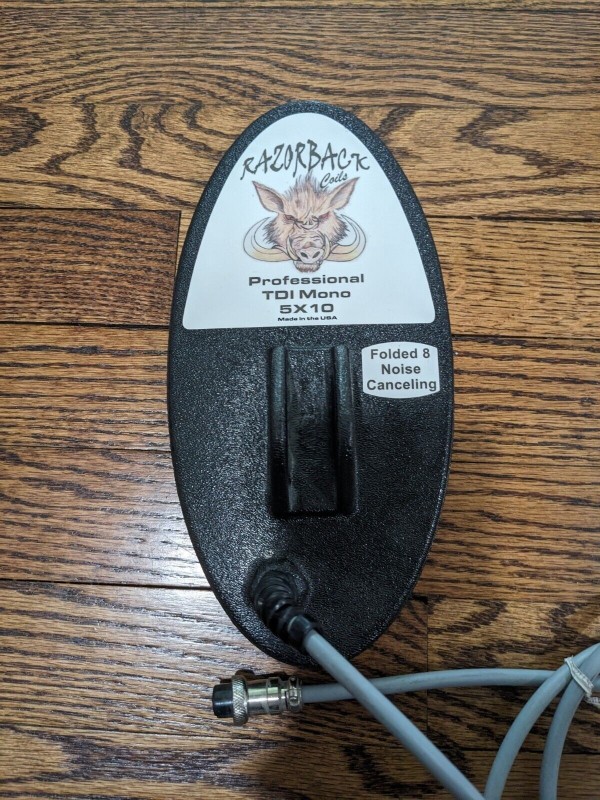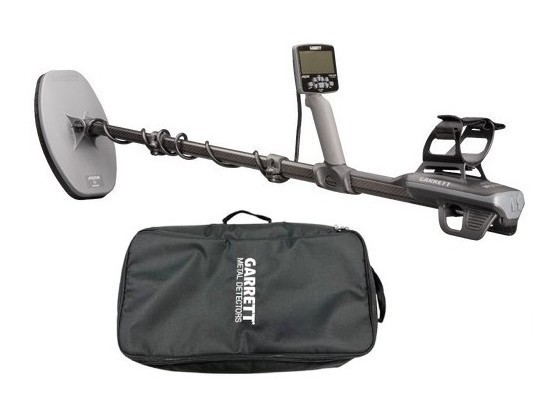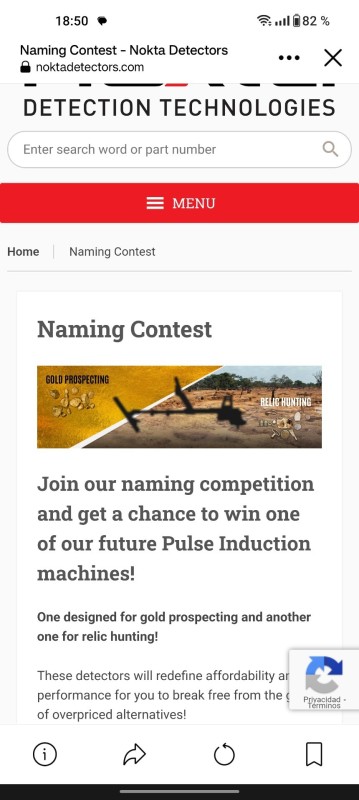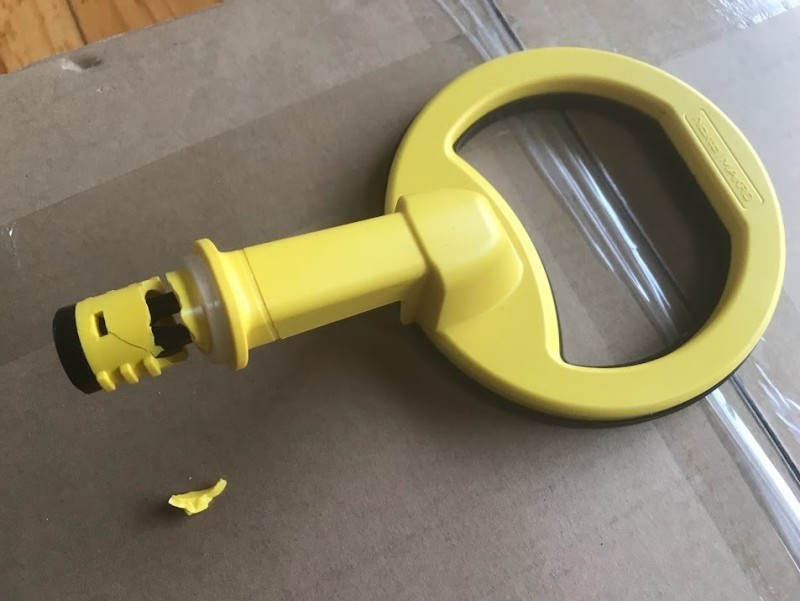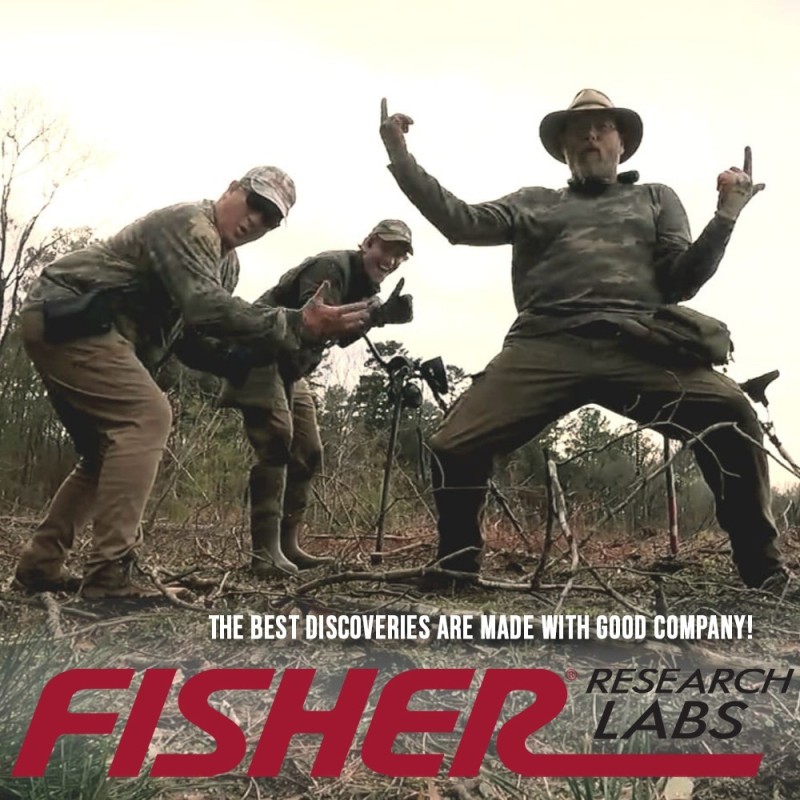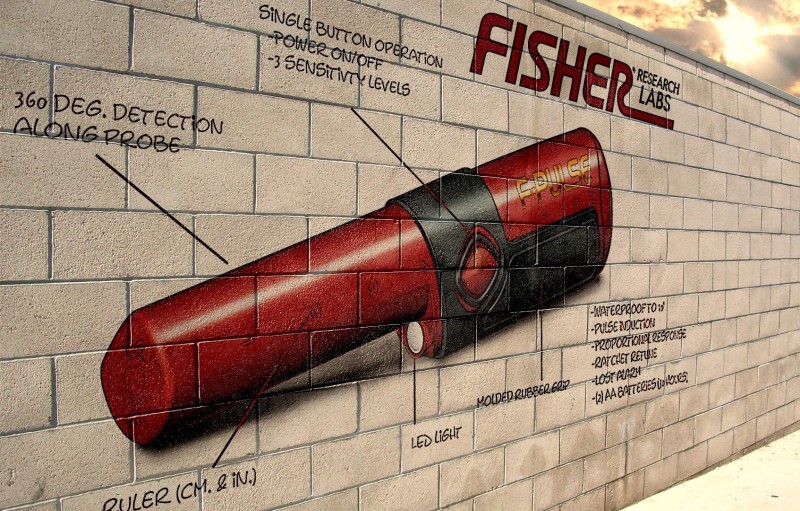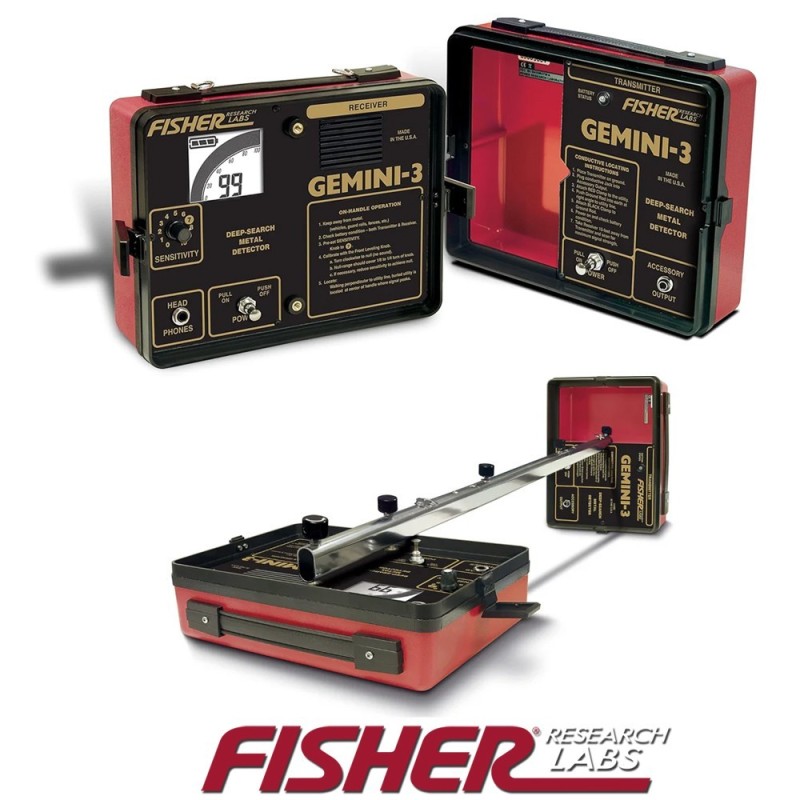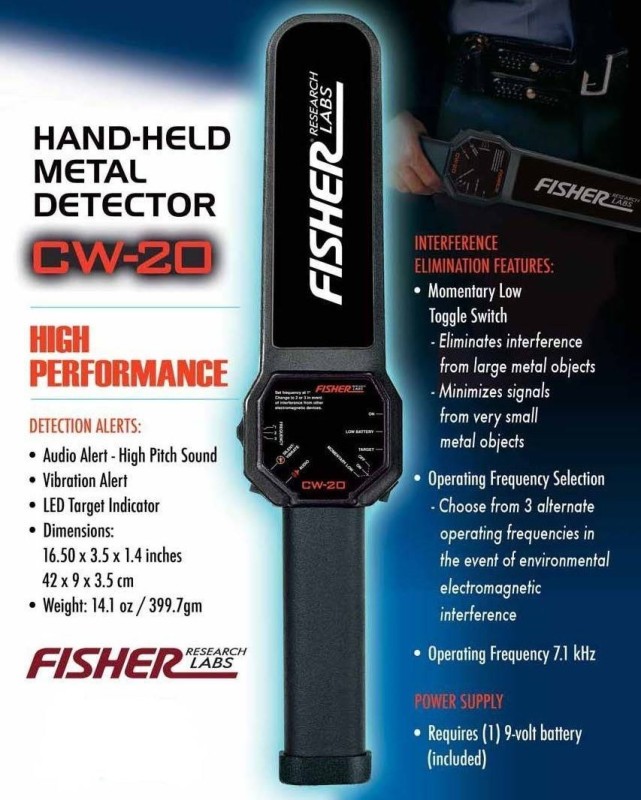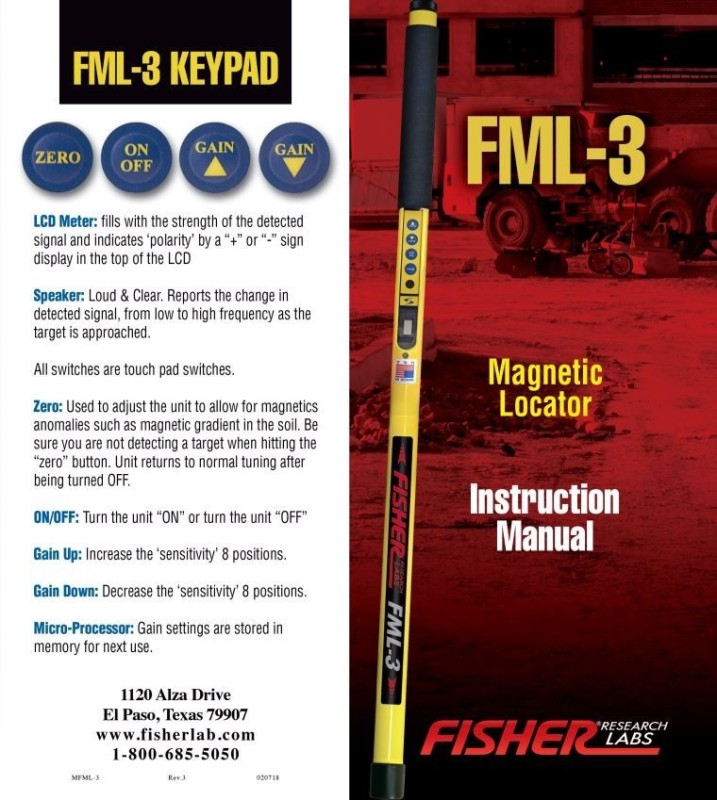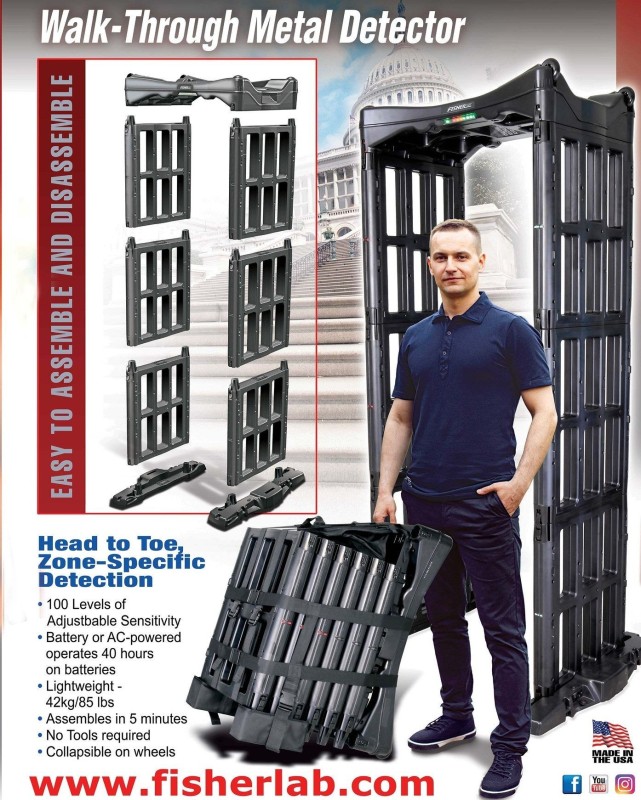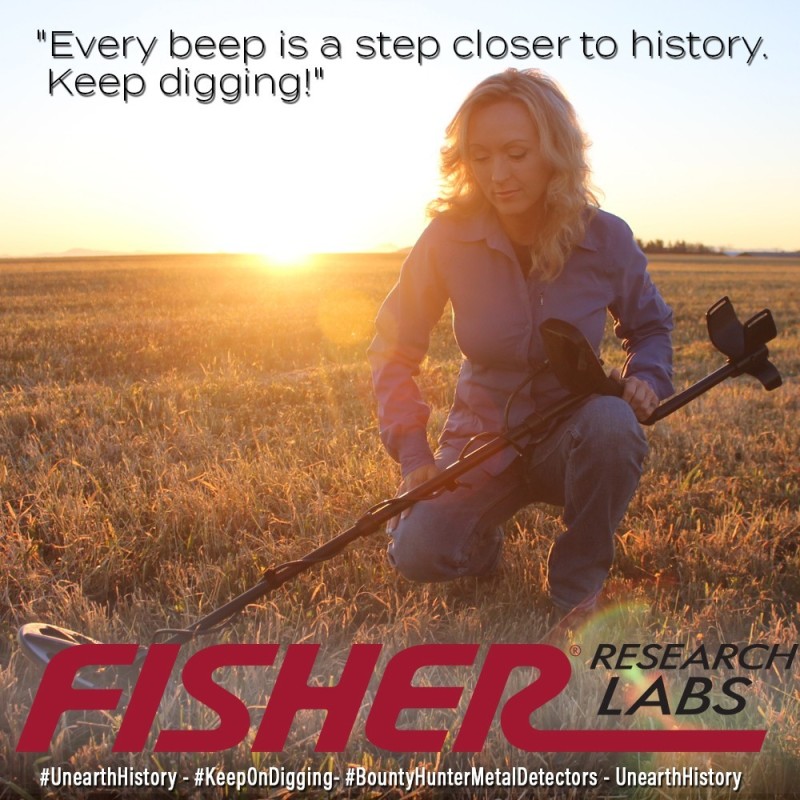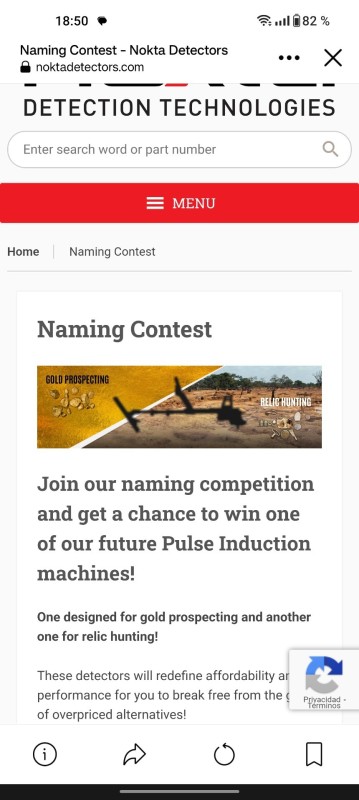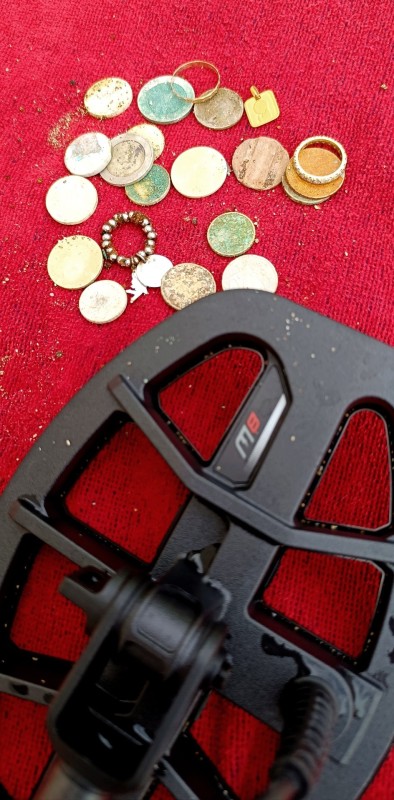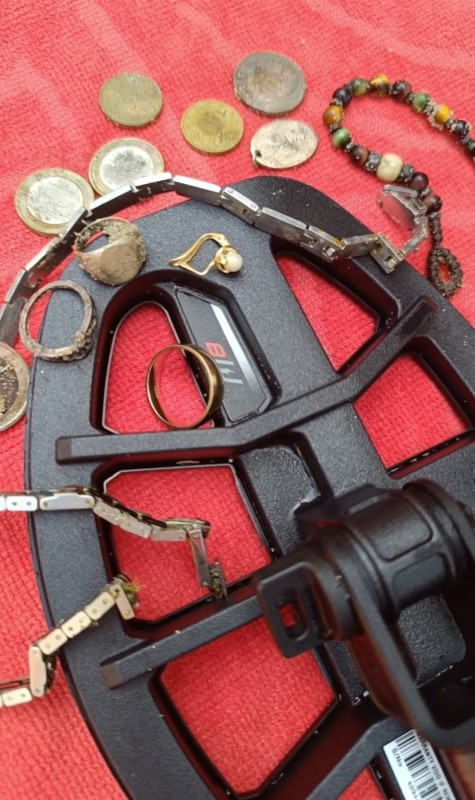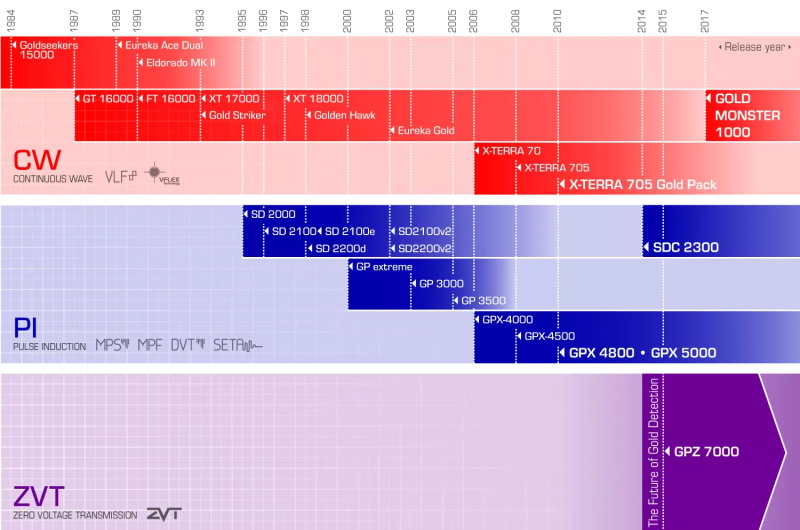Search the Community
Showing results for 'Pulse dive'.
-
Here's an idea for a new detector. Does anyone ever think we could see a Pulse Induction Detector with a Setting that could turn it into a VLF? This would give us the benefits of owning 1 detector that can find deep gold, get rid of most soil condition and hot/cold rocks...and at the same time provide the Sensitivity to wire gold/specimens/tiny bits and have the Discrimination with great identification ID such as the Equinox/Manticore. I realize we could not have both running at the same time, but that ok with me. I already take 2 different gold capable detectors on many of my hunts as I've learned quite a few sites have various kinds of gold. Sure, there will be times the ID system from the VLF setting may not ID properly, but as the end user, I can decide for myself. I already use the VLFs in heavy trash areas and on deep targets, I still investigate some as I have learned that depth and certain soil conditions can fool even the most expensive detectors. It would be a big hit with some regions and maybe not so with others. Having the option of such detector would be nice for those who detect old mining areas. Another big part of the sales of this detector would be generated towards the Beach Hunters and also the Civil War Relic folks. It's my dream, so please don't piss on it. Although I do enjoy hearing your thoughts good and bad. After all, it's just a dream...until it becomes reality.
-
I think that Garrett ATX is one of the first to use the VLF mod/even if it is very basic/ it depends on the discrimination..., at least I really believe that... Definitely the next generation..it can go further... As for the hybrid detector, the Aka Smart pulse detector has been on the market for a while, which is a hybrid PI-VLF detector... but first of all, ask yourself a question.. what do you expect from such a hybrid PI-VLF detector?
-
Garrett is pleased to announce that our powerful Axiom pulse induction prospecting detector is now available in a new, affordable option. This new Axiom Lite package, recently introduced in our Australian marketplace, has already proven to be a big hit. Customers receive all the advantages of Garrett’s most powerful PI detector at the best possible price—thousands of dollars cheaper than its pulse induction competition. It’s the perfect way to make a successful start on prospecting without breaking the bank. Axiom Lite Part No: Garrett MSRP: MAP pricing: 1142710 $2,999.99 $2,550 with military discount. Includes Garrett Axiom detector, soft carry bag, 11” mono coil, and coil cover. This is a savings of $1,000.00 off Garrett’s traditional Axiom product offerings. Packages of the new Axiom is now available for purchase in the U.S.. The U.S. military discount (15% off MAP) is available on the Axiom lite.
-
April 17, 2024 AXIOM LITE Garrett is pleased to announce that our powerful Axiom pulse induction prospecting detector is now available in a new, affordable option for your customers. This new Axiom Lite package, recently introduced in our Australian marketplace, has already proven to be a big hit. Customers receive all the advantages of Garrett's most powerful PI detector at the best possible price—thousands of dollars cheaper than its pulse induction competition. It's the perfect way to make a successful start on prospecting without breaking the bank. Details: Axiom Lite Part No: 1142710 Garrett MSRP: $3,529.99 MAP pricing: $2,999.99 Includes Garrett Axiom detector, soft carry bag, 11" mono coil, and coil cover. This is a savings of $1,000.00 off Garrett's deluxe Axiom product offerings. Packages of the new Axiom Lite will be shipping this month, so please place your orders. The U.S. military discount (15% off MAP $2549.99) is available on the Axiom Lite for dealers who wish to participate. The deluxe Axiom package options are also still available: PN: 1142720 Axiom Metal Detector with 13"x11" DD-FC Coil, 11"x7" Mono Coil, AA Backup Battery Pack, and MS-3 Wireless Headphones PN: 1142765 Axiom Metal Detector with 13"x11" Mono Coil, 11"x7" DD-FC Coil, AA Backup Battery Pack, and MS-2 Wired Headphones
-
April 17, 2024 AXIOM LITE Garrett is pleased to announce that our powerful Axiom pulse induction prospecting detector is now available in a new, affordable option for your customers. This new Axiom Lite package, recently introduced in our Australian marketplace, has already proven to be a big hit. Customers receive all the advantages of Garrett's most powerful PI detector at the best possible price—thousands of dollars cheaper than its pulse induction competition. It's the perfect way to make a successful start on prospecting without breaking the bank. Details: Axiom Lite Part No: 1142710 Garrett MSRP: $3,529.99 MAP pricing: $2,999.99 Includes Garrett Axiom detector, soft carry bag, 11" mono coil, and coil cover. This is a savings of $1,000.00 off Garrett's deluxe Axiom product offerings. Packages of the new Axiom Lite will be shipping this month, so please place your orders. The U.S. military discount (15% off MAP $2549.99) is available on the Axiom Lite for dealers who wish to participate. The deluxe Axiom package options are also still available: PN: 1142720 Axiom Metal Detector with 13"x11" DD-FC Coil, 11"x7" Mono Coil, AA Backup Battery Pack, and MS-3 Wireless Headphones PN: 1142765 Axiom Metal Detector with 13"x11" Mono Coil, 11"x7" DD-FC Coil, AA Backup Battery Pack, and MS-2 Wired Headphones
-
They just published on the Nokta site. Two new pulse machines are coming, one made of gold and one made of relics
-
The pulse induction detectors currently manufactured and listed on Minelab's website are the SDC2300, GPX 5000 and GPX 6000. There is also the GPZ 7000 but it uses what Minelab labels ZVT=zero voltage transmission instead of pulse induction or induction balance tech.
-
Has anyone had this happen to them? I've never even used the coil but my Pulse Dive has run out of warranty a few months ago I think, I've lost its receipt it may well still be under warranty, so it's now a throw away having never been used. I had it on the Pulse Dive as I figured I'd never use it as a pinpointer but hoped to use it for a play around in the water at some point over summer but it's winter now and never found time in the previous summer so the pin pointers never been used at all except for some air tests. Today I went to remove the coil to put the pinpointer end back onto it to make a video comparing pinpointers and while undoing the coil it just shattered for no real reason, I can't explain why it would break like this, it's always been difficult to get it off as its a waterproof unit and needs a good seal but I guess this time the stress on the plastic was just too much for it and it exploded. I guess that was some wasted money seeing I never even got to use it.
-
Admittedly I had lost all interest in First Texas and their detectors for some time, I haven't been detecting all that many years but I jumped through the First Texas ranks with a GBP, GB2 and two models of the Teknetics T2 along with their F-Pulse, now I even have an F19 on its way. It appeared with their lack of new products and very dated models they were just another generic detecting company, not something to really pay much attention to. My most recent of their purchases was the F-Pulse not all that long after it came out, while a decent pinpointer it is hardly something to be excited about a company's prospects over. Other than a coil that nobody seems to know much about and I haven't been able to find anyone that actually bought one they haven't really released anything for a very long time, and when they did it was just a rehashed older model, or as we like to call them paint jobs. Recently they started an Ebay firesale letting buyers dictate the prices they are willing to pay for their detectors, and people have been getting fantastic deals, but if you sit down and think about it for a bit are the deals really fantastic or are they about the price the detector should be in today's market, with the various competitors leaving these models well behind, it seems more like they're working out the prices people would be willing to pay and running with it, they've probably sold more of their higher end detectors in the past month or so with this firesale than they have in a year or two. Suddenly First Texas is being talked about again by people that had little interest in their detectors when they were full price. Many of us predicted this would happen one day where their high-end machines are basically entry level in the modern marketplace. I was thinking this is it, they're just going to clear out the stock and wind up the hobby detector part of their business, then I took at look at their Facebook group, I hadn't bothered to look at it forever as they were just a stagnant business. To my surprise it was very active, mainly with their marketing of course but active none the less. Every few days they're doing posts marketing their products, this really took me by surprise, and they had no indication at all they're doing an Ebay fire sale, another surprise, if there was a good place to announce it you would think it would be their Facebook group with 24000 followers, that's a broad reach of people that would see their sale that may not know about it. I think they're just settling into the new normal, working out the ideal pricing for models where they can get sales and will then return to their status quo of selling the same old models for the next decade. They appear to have a larger focus on metal detecting products outside of the hobby market on their Facebook group too, which probably demonstrates where a much of their detecting income is derived from. Their last marketing post was only 2 hours ago. Here are some of their recent marketing posts. So, they do have a pretty active marketing person on Facebook, and someone making up fancy marketing pictures. I hope they survive as a hobby detecting company, and I really hope they've got at least one more "New" detector up their sleeve, a Gold Bug 3 would be something many of us would appreciate, but I'm sure a F75 SMF would be more of a crowd pleaser for a bulk of Fisher fans.
-
competition to name the two new Nokta pulse detectors. One for the search for gold and another for relics
-
@Jeff McClendon or @abenson can probably do a deeper dive, but from a purely technical standpoint I think it breaks down like this...it depends. Not trying to be snarky, it's just that the question as you presented it is a little open ended since you didn't specify whether you were primarily interested in just general nuggets or also being able to Sniff out micro, subgram gold. Furthermore, ground conditions matter for this comparison. I'll give you my thoughts from a purely technical basis from a detector standpoint (I own both and have done some air tests), but avid gold hunters like Steve H., Jeff, Andrew, phrunt and others who have used both can weigh in with their practical field experience. I think overall, it's a close call based on test and real world results I've seen posted here and elsewhere. Probably a slight performance edge goes to the Nox because of the overall versatility that Simultaneous Multifrequency brings to the table in terms of hot ground handling. Maybe Orx handles itself slightly better in ferrous trash situations. I know Deus 2 does much better than the Nox 900 in that regard and also in regards to Target ID accuracy/stability. The D2 is held back slightly, however, because the smallest available coil is the 9" round. If you ignore ground handling, the Orx may have a slight edge in subgram gold sensitivity solely based on the higher frequency (80+ khz) it can achieve with the 10x5 HF coil. I don't think the Nox 900 is far behind though, if at all, especially with the 6" coil (vs. the 10x5). On larger nuggets I would probably give the edge to the Nox as that Coiltek coil has great depth for its footprint on larger gold targets vs. the Orx. It's still close. For hot ground handling, the Nox in Simultaneous Frequency Mode is better than the SF Orx and also has ground tracking unlike the Orx. But the Orx still performs ok in hot ground and is easy to rebalance with single button ground grab. Finally, the Nox 900 is an overall more versatile detector vs the Orx for detecting in general. So overall edge to the Nox. Orx will cost you a lot less however ($550) vs. $1000 for the Nox (includes the 11" and 6" coil) + $235 for that Coiltek 10×5. TBH however, based on the recent $500 price drop on Manticore down to $1200, I would also strongly consider getting Manticore over the 900 and pick up the $250 M8 5x8 coil which should give you everything you need (it effectively combines the best of the 6 inch round coil and the 10x5 coil with perhaps a incremental hit on depth and coverage). The cost Delta is only about $200 even if you factor in the cost of the 10x5 Nox coil vs. M8 Manticore coil But you do end up with one less coil overall because the Nox package includes the 11" and 6" coils. Also, the Manticore is just a better all around detector than the 900. There is nothing the 900 can do that the Manticore can't. FWIW. My recommendation: For pure nugget hunting value, consider the Orx. For overall performance Manticore + the M8 coil. Splitting the cost difference (slightly, by $200) Nox 900 + Coiltek 10x5.
-
As I told last week, I was preparing the Manti for today's session on the seabed. In a few words, "damn it works"... Even if I abused the machine using underwater the beach LC program, I however managed to take with me three pieces. The second attempt will be with surf and seawater, which I think it is the proper way to use it when diving. Not bad for the day one💣
- 5 replies
-
- gold found
- jewelry detecting
-
(and 1 more)
Tagged with:
-

Corroding Antenna Wire On Deus 2..
Chase Goldman replied to Erik Oostra's topic in Metal Detector Advice & Comparisons
You never describe what issues you are having other than the antenna wire turning black. If the unit is still working when you submerge it (i.e., the remote is still receiving a signal form the coil) then the discoloration on the antenna wire is a non-issue. The warranty is 5 years and no Deus 2's are past warranty at this point. Regardless, if the only problem you are having is the antenna and you don't get warranty relief if it has failed, an XP branded replacement wire costs about $20-$25 and there are descriptions online about how you can home brew one yourself from an even cheaper length of coax you can order online. Yes this is not safety critical military-grade diving gear and I don't like having to use an antenna, so I understand your trepidation, but the rest of the unit is robustly designed for repeated dives to 60 feet (provided you insert the dive plug) and other than antenna corrosion and cable failures associated with the submersible hard-wired Bone Phones, I have not heard reports of water/dive related degradation of the key hardware (remote and coils). So I would not paint the entire detector as a being unable to stand up to the rigors of water detecting. On the other hand, for daily salt water detector, I think investing in a fully carbon fiber shaft and stem system is worth it. Here is the one I use: https://www.stevesdetectorrods.com/product.php?id=XP.D2-01 Steve is a forum member here (@steveg) and I can vouch for his equipment quality and craftsmanship and, above all, his customer service. I'm on the east coast, but I've heard good reports of it performing well on west coast beaches with black sand and appears to be a very popular detector amongst the west coast beach detectorists. Though it seems to struggle with the black sand at @midalake's Mexican resort beaches. Midalake is a hard core beach hunter and vouches for the D2, but also likes to use a couple other detector brand/models under certain circumstances. I think you should stick with the D2, but I'm biased. If it really doesn't sit well in your gut, then consider alternatives like the Minelab Manticore or Equinox or the Nokta Legend or Nokta Double Score which are great value detectors. I've heard good things about the Garrett Apex on wet salt sand beaches, though it is only weather resistant, not submersible. Good luck. -
After the second week, I'm still a newbie with this machine, but apparently, applying the basic good principles the results are yet on another level. There's a place where I hate to dive, due to terrible shaped rocks that can destroy elbows and knees if a minimum wave push me against it when I'm in between and searching. The fact is that those traps helps to keep the stuff really good. This stretch of a private beach it is made of solid rocks more than moving boulders and with some erosion affecting the spot, it means really few brave people able to swim and as a direct consequence, nothing to search after the summer... But, I tried again today after being there months ago with every detector I have in my shed and surprise surprise 🫢... I named trust building this post cause the two gold pieces I pulled up downthere are a clear evidence of a better time management during the session. This morning I tuned the Manticore to be scary quiet and just stopped the few times a pure "non iron" signal it was requiring attention. The number of people that searched in this spot since always, left so few targets to listen that most of Us never even talk about or try to go again...It just don't worth the effort... Well, the picture proves different🫢. I'm not overjoying and I recognize the small M8 advantage between tight crevices, but after the 6" and the Ctx... Here's the moment when I can say goodbye to my old trusted sniper rifle.... I never tought this could happen one day...
-
- 1
-

-
- jewelry detecting
- jewelry found
-
(and 1 more)
Tagged with:
-
New Pulse Induction Detectors From Nokta
HardPack replied to Luis's topic in Nokta / Makro Metal Detectors
The Nokta Name that Detector Facebook window is apparently open: The Nokta Pulse Storm Gold, The Nokta Pulse Storm Relic Sender's message was sent successfully. -
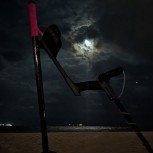
Corroding Antenna Wire On Deus 2..
wprandy replied to Erik Oostra's topic in Metal Detector Advice & Comparisons
There is no way my sister will want to purchase this detector if she has to do a DIY fix out of the box. She has been detecting daily since the 80's at the beach in Southern California. She doesn't dive anymore, but she's in the water up to her waist. -

New Pulse Induction Detectors From Nokta
Jeff McClendon replied to Luis's topic in Nokta / Makro Metal Detectors
A coin/jewelry/relic detector with fixed pulse delay set for larger coin sized targets. It will ignore the really small stuff A gold prospecting detector with fixed pulse delay set for 0.1 gram nuggets and larger. Personally I would like both options in one detector. Waterproof would be awesome. -
I understand where @IBMe is coming from. It's good to see the perspective and out-of-the-box ideas of newcomers to the hobby who are not biased by being steeped for years in the technologies and features that the detector manufacturers feed us. Technology is not holding this idea back, because it has been tried before. This is more about human biology (how humans process sensory input) and human factors engineering (how to present information in a manner that enables efficient and effective processing by a human) than it is about technology. Furthermore, it probably makes more sense to directly "visualize" the processed target signal rather than the processed audio from that processed target signal. And guess what, that has also been done with the various target trace implementations. The fact is, target audio is no accident, it is designed to provide the detectorist with a lot of target information that is embedded in the nuances and subtleties of the audio signal (volume, tonality, harmonics), and with repeated "training" and "muscle memory" via target recovery and audio conscious and subconscious signal association, enables the detectorist to learn those nuances and become even more effective than what can be visually displayed and interpreted on the fly. That is not to say that visual target representations are not effective. Of course they are, as evidenced by the more sophisticated target trace displays successfully used by detectorists on high end detectors. But like I said, those are processed from the "source" target signal, rather than secondarily from the processed and generated audio waveforms. Necessity is the mother of invention, as they say. And the need to discover buried ordnance in the wars of the first half of the 20th century was the real the impetus for refining the induction balance and pulse induction metal detecting principles that are also used in the hobbyist detectors of today. It is really defense and security applications, followed by gold prospecting that keep the technology progressing for the hobbyists. If defense or security applications can be more effective with more sophisticated visual target representations, you can believe the detector manufacturers will invest and leverage that technology for hobbyist applications, if it is cost effective. They key to "visual" target representation, whether you do that from the processed target signal directly or from the processed target audio, is determining how to effectively visualize the target attributes in a manner that enables the operator to enable the operator to efficiently, unambiguously, and reliably interpret those visual queues and to effectively integrate them with the audio target information they are also getting (without confusing the operator). If the graphic visual target implementation can be picked up by the operator rather naturally with little need for "training" (i.e., swinging the detector for hundreds of hours before it "clicks") then that is a bonus. There have also been incremental advances in coil winding technology that have improved coil performance (depth and sensitivity) and ergonomics (weight). Discrete tube-based circuits, gave way to semiconductor electronics, which fostered in more compact integrated circuits that enabled more sophisticated target processing in the form of rudimentary ferrous discrimination and ground effect compensation circuits as well as more sophisticated visual and audible target identification. High speed digital signal processing and power electronics ushered in even more sophisticated target ID interfaces as well as enabling a greater ability to separate targets in high target density environments (high recovery speeds vs. depth), generate higher transmit powers with less weight and heat, enabled more sophisticated EMI cancellation, and also enabled advanced features like the myriad of simultaneous multiple frequency transmission protocols that exist today. The next enabling technology for advancing the sophistication of both visual and audio target ID representations from where they are today probably resides in the detector designers' effective harnessing of the power of artificial intelligence/machine learning. Imagine a detector that gets smarter/more effective at target identification (and has the ability to evolve how it presents that more effective data to the detectorist) the more you swing it. That is probably the next frontier or evolution/revolution in advancing the state of the art in metal detection. At least that's my take.
-
I did a quick air test with the Nokta Accupoint, Garrett Carrot and FTP F-Pulse using a 0.15 gram flat gold nugget, US clad dime, US clad quarter and US nickel. Results: Nokta Accupoint max sensitivity 0.15 gram flat gold nugget---3/16th inches US dime---1 3/4 inches US quarter---2 inches US nickel---2 3/8 inches Garrett Carrot max sensitivity 0.15 gram flat gold nugget---1/32nd inches US dime---2 1/8 inches US quarter---2 3/8 inches US nickel---2 5/8 inches Fisher First Texas Products F-Pulse max sensitivity 0.15 gram flat gold nugget---no response US dime---3 3/4 inches US quarter---3 7/8 inches US nickel---4 1/8 inches
-
I like the looks and function of the Axiom too, even though I wouldn't have use for a pulse in my venues. I think they used the pod from the Apex nicely( if it was second to the Apex)... I can't remember. The only thing I'm not a fan of is that little "patio chair" armcup on top of the battery compartment, but that's the graphic designer in me! 🙂 I like collapsible too, especially if I can fit it in a backpack! I have reading glasses on a cord around my neck and I still couldn't see the display on one of my recent detector purchases! Just love the backlight on the Apex display when I'm thinking, "C'mon, one more old coin!" 🙂
-
I was looking though some blogs on electrical engineer Dave Johnson and Bruce Candy and was amazed at how much of our best detector technologies have come from these two inventors. I'm sure there is more people to give credit too also but these two have really left a milestone. Here's below is a Q & A from Dave Johnson Question 5: DS: Would you mind giving us a list of detectors you’ve had a hand in developing? Dave: “Old Fisher: 1260, 1220, 1210, 1225, 1235, 1265, 1266, 1280, Impulse, CZ6, CZ5, CZ20, Gold Bug, Gold Bug II, TW6/Gemini, FX-3, and several industrial products. Tesoro: Diablo MicroMax, Lobo Supertraq. White’s: DFX, Beachhunter ID, GMT, MXT Troy: Shadow X5 Bounty Hunter & related products: nearly everything we manufacture. Many of these products are adapted from the original Teknetics which was designed by George Payne. The Teknetics T2 however was an entirely new design. New Fisher: F75, F4, and everything else since then. On most of the above I was the lead engineer. On the White’s DFX and Beachhunter ID I developed the multiple frequency circuitry, and other engineers designed products around that circuitry. In addition to the above there are many products on the market which are adaptations by other engineers of products I designed.” John: “Bounty Hunter : I have had a hand in most of our current line up from the bottom to the top, from Guardian to the Time Ranger. Teknetics : T2 I was main programmer The Fisher’s : The F4 and F75” Question 6: DS: Are we about “maxed out” as far as how deep VLF units will go? In your opinion, what’s the biggest obstacle for current technology in achieving increased useable detection depth? Dave: “Getting extra depth out of a VLF, multifrequency, or PI machine is very difficult, because these machines follow an inverse 6th power law relationship between signal voltage and depth. If everything else is maintained equal, doubling the depth requires 64 times as much signal. If this is done by increasing transmitter power, doubling depth requires 4,096 times as much battery drain. That’s the basic reason why depth increases come so slowly in this industry. The biggest impediment to getting usable depth in the ground, is interference from magnetic and electrically conductive minerals in the ground, which can produce signals hundreds of times as strong as that of the metal target you’re trying to detect and hopefully identify. There are several approaches to extracting the metal signal from the ground mineral signal, but they all have their limitations. That’s why you see several different technologies coexisting in the market.” John: “Dave points out biggest obstacle which is seeing target through the Ground and Air interference.” Question 7: DS: If you had to pick one existing feature on the F-75 that you’re the proudest of, what would it be? Dave: “If we can include the T2, it’s a tossup between the ergonomics and the target separation. Both aspects of the design were huge leaps forward. If you mean just the F75: the fact that on the F75 we pushed sensitivity even further than on the T2. As I said a few questions back, more sensitivity is very difficult to get in this industry.” John: “One of things I like best about the F75 is it has the ability to give I.D. values while in static mode.” Question 8: DS: Are TID pulse units the hobby future? Or, what do you think will be the next great advancement in metal detector technology? Dave: “About 1985 I built a real sweetheart of a discriminating PI unit, not very hot in air test, but it was simple, lightweight, powered by one 9 volt “transistor battery”, ran quiet in bad ground, had no bad habits, and you didn’t have to dig any trash. It morphed into a fully static TID machine which Fisher came close to releasing about 1989, but its reliance on fully static operation which was supposed to be an advantage, was in fact a fatal flaw for a TID machine. Stripped back down, it became the Impulse which was strictly all-metals. Industry insiders know about a PI TID machine which a fairly sharp freelancer has had under development for about 5 years and which is said to be nearing production. Whether or not that one makes it, I expect there will eventually be others. The next great advancement in metal detector technology will be….. ahem… we’ll all know when whatever it is actually hits the market and customers say it’s a great advancement. I hope that when that event happens, it’s got our trademark on it. If it’s got someone else’s trademark, I guess we’ll just have to play leapfrog.” Bruce Candy had the most PI/ZED Technology advancements and is still applying for patents in 2024.
-
Pulse Dive Coil Broke Just Taking It Off
phrunt replied to phrunt's topic in Nokta / Makro Metal Detectors
Nokta were excellent and replaced my coil so now I've got a working pulse dive again sorry, I threw the broken coil out and now need the pinpointer/handle part. -
New Pulse Induction Detectors From Nokta
Yatahaze323 replied to Luis's topic in Nokta / Makro Metal Detectors
These new pulse detectors are probably going to be in a legend housing with a battery under the arm cuff and I'm guessing that they'll both be waterproof. I'm guessing the main difference will be the software.




